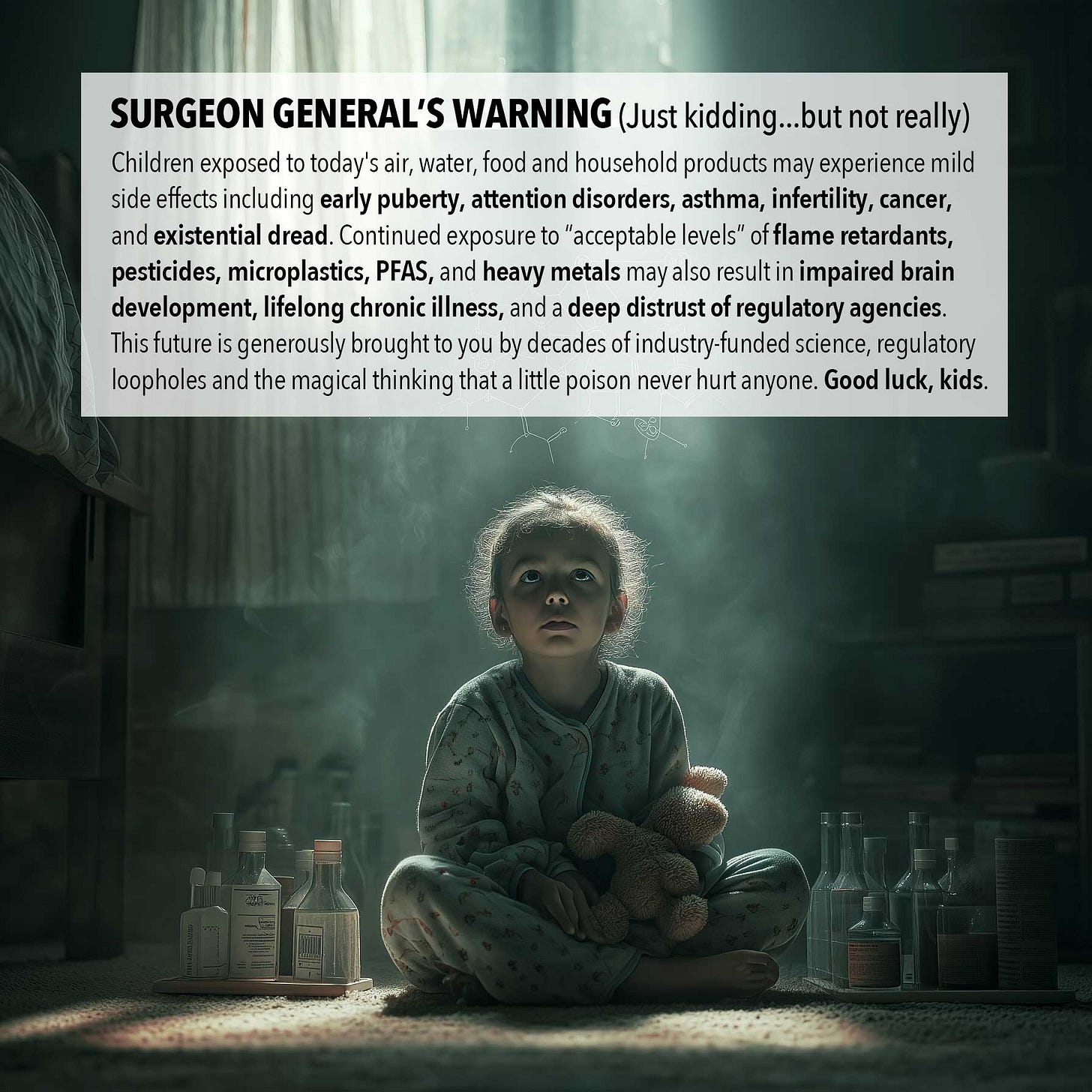Let’s start with a simple, maddening question: Why are we poisoning our children?
We’ve known for years that many toxic chemicals—lead, benzene, tobacco smoke, air pollution—have no safe level. And yet, our governments and regulatory systems continue to allow exposure to these poisons, clinging to outdated assumptions that small amounts are acceptable.
The Convenient Myth of "Acceptable Levels"
When regulatory agencies first faced the daunting task of evaluating tens of thousands of chemicals, they made a convenient decision: they assumed that chemicals were safe or “safe enough” below some invisible threshold. That assumption—the idea that there's an “acceptable level” of exposure—became the foundation of modern chemical regulation.
But let’s unpack that phrase. “Acceptable level” doesn’t mean safe. It means a certain amount of disease and death is considered tolerable to avoid disrupting economic growth. This wasn’t based on strong evidence. It was a guess. And it was wrong.
We now know that small, repeated exposures to air pollution and toxic chemicals can lead to big problems over time—especially for children, whose brains, immune systems, and hormones are still developing. They also contribute to one in five deaths globally.
Toxic Chemicals: Innocent Until Proven Guilty?
The current system works like this: once chemicals are shown to be safe in small, industry-funded laboratory studies they are presumed safe until someone proves otherwise. Once a chemical has that “stamp of approval,” it becomes devilishly hard to restrict or ban. The burden of proof shifts to regulators and independent scientists, and it can take decades—even more than a century—to gather enough evidence to restrict or ban a toxic chemical.
And who conducts most of the safety testing? Often, it’s the chemical manufacturers themselves. Unsurprisingly, many of these industry-funded studies underestimate harms or conceal evidence. We've seen this play out time and again—with lead, asbestos, PFAS or Forever Chemicals, Bisphenol A, and more.
A Chemical Experiment on a Global Scale
Somewhere between 100,000 and 340,000 chemicals are in commercial use today. Only a tiny fraction—less than 5% of high-production chemicals—have been thoroughly tested for toxicity. At the current pace, it would take another 300 years to complete the job.
But time is not on our side. Every year, more than 20 million people die worldwide from widespread exposures to lead, toxic chemicals, and pollution. Every day, children are born pre-polluted—carrying measurable levels of flame retardants, PFAS, pesticides, and heavy metals in their bodies.
This is not a minor risk for a few unlucky individuals. It’s a major public health crisis that plays out insidiously—across populations, over time—fueling chronic diseases like cancer, heart attacks, asthma, ADHD, infertility, and early puberty.
There is Hope
If this sounds bleak, here’s the good news: Prevention works.
After the U.S. removed lead from gasoline, lead poisoning dropped by 95% and heart attacks plummeted.
When Scotland banned smoking in public places, preterm birth rates fell by 15%—even among non-smoking mothers—and heart attacks fell by 20% among non-smoking adults.
In Mongolia, using HEPA air cleaners in homes led to fewer miscarriages and higher learning scores in children.
These are not moonshots or billion-dollar interventions. These are small changes with massive ripple effects.
What Governments Must Do
The solution isn’t better consumer shopping—it’s better public policy.
Stop using the myth of “acceptable levels” to delay action.
Fund independent research on the health effects of toxic chemicals.
Ban or restrict chemicals based on suggestive evidence.
Protect public health from toxic chemicals the same way we protect against infectious disease—with urgency, coordination, and public trust.
What Can You Do?
Until government agencies catch up, you can still act to reduce your family’s exposure:
Avoid fragrances, air fresheners, and scented cleaning products.
Don’t use pesticides around your home, garden or farm.
Choose organic produce when you can—especially for kids.
Cook at home and skip canned foods (many still contain BPA) and heavily processed foods.
Ventilate your home, use a HEPA air filter, and avoid smoking indoors.
Daily rituals matter. Over time, little steps add up.





an "innocent until proven guilty" regulatory scheme and "public assumes that if they can buy it it means it's been proven safe" is a bad mix. Either regulate or don't - but be honest about which it is
It’s the same response with disease 🦠